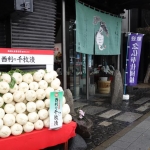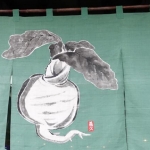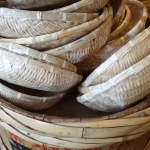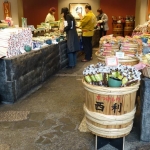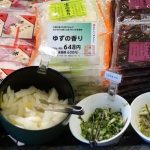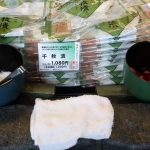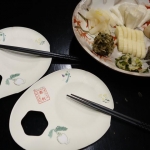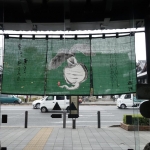Pickle Tasting
Autumn coolness
hand and hand paring away
eggplants–cucumbers
–Bashō
Kyoto-style tsukemono exemplify this ideal, using simple ingredients like salt, rice bran mash and vinegar in simple, yet precise methods that lock in the best flavor of the season and preserve it for a few days or months. When biting into a piece of Kyoto tsukemono, you’ll find the flavor and texture of the vegetable enhanced, and not overpowered, by the pickling. The bright colors are also natural, as no artificial colorings are used.
Tsukemono were once made at home (every home had a picking jar), but these days no one seems to have the time. Tsukemono are so vital to the traditional Japanese diet that they are a ”must,” and along with rice and soup, make up the basic meal. In less prosperous times, pickles were also the primary source of nutrition, important in the days before refrigeration, when pickling was one of the only ways to preserve vegetables.
There are several types of tsukemono: Furu-zuke pickles have a sharp, intense flavor and can be kept for several months because they are pickled in a salty rice bran mash, while Asa-zuke have a fresh flavor because they are lightly pickled in dry rice bran, and can only be kept for a few days. You can even make your own very simple Shio-zuke pickles by covering cucumbers, daikon (Japanese long white radish) or carrots in salt and pressing them for 20 minutes, or until they ”sweat” out their natural water. However, the rice bran imparts a deeper flavor that has to be tasted to be appreciated.
The variety, of course, depends on the season: Spring brings leafy vegetables such as mizuna (a thin leaf vegetable), while summer features eggplant, autumn, kabocha (pumpkin) and winter, senmai-zuke (giant turnip cut into paper-thin slices.)
Here are places to visit and taste:
http://www.murakamijyuhonten.co.jp/raiten.php


